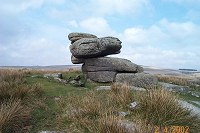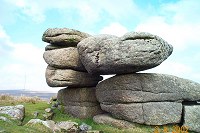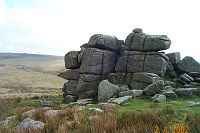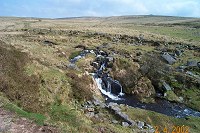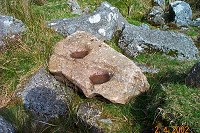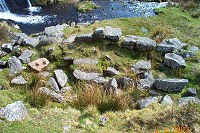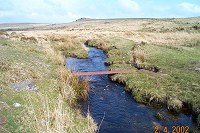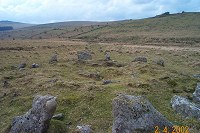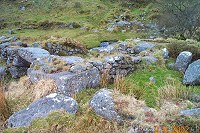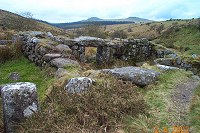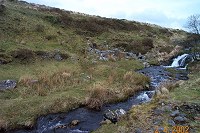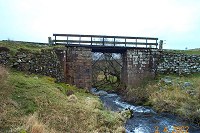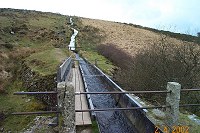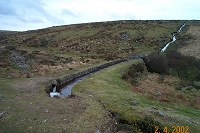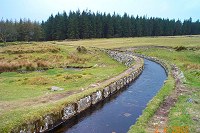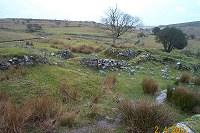
All | Little | Shorter | Standard | Longer | Tors | Relics | History | Links | Panoramas | Home
|
|
Black Tor TinworksThe remains of Black Tor Tinworks are easily found since they lie some 150 yards from the main Princetown - Yelverton road. There are 2 ruins - one on either side of the Meavy stream. The tin works are quite old - probably 16th century - and are fairly well preserved. Tin works were rectangular buildings that were powered by water. Tin ore was brought in to be crushed by iron shod stamps of timber that were powered by water. The crushed ore was then allowed to settle in buddles of moving water. The heavier tin ore would sink as the lighter sandy gangue was swept away. The tin could then be smelted into purer white tin by furnaces in a blowing house. Tin ore was laid with charcoal inside the furnace which was fanned by water driven bellows. The molten tin would drop down into a stone tray from which it was ladled into moulds. Both of these ruins were used in stamping and smelting. The remains of furnaces can be seen in both of them.Park at the side of the B3212 road at SX 570718. It's a short walk to the Meavy valley and the recognisable logan stone of Black Tor. The remains of the tinworks lie next to a delightful waterfall. Walk upstream to see the stone row. Walk downstream to see the aqueduct of the Devonport Leat.This is a very easy walk of about 1 mile. Lots to see in a small area. No restricted military areas.
|
|
All | Little | Shorter | Standard | Longer | Tors | Relics | History | Links | Panoramas | Home | |

